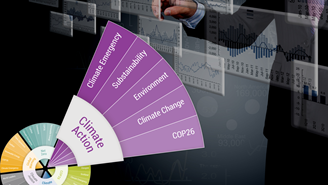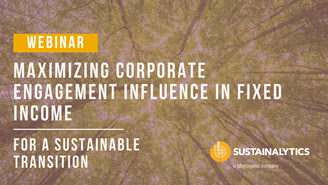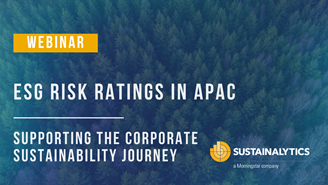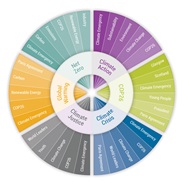Infographic | How Today’s Banks are Adopting ESG-Based Strategies to Become More Sustainable
Banks need comprehensive and credible environmental, social, and governance (ESG) strategies to participate in and benefit from the accelerating growth of sustainable finance. This infographic sheds light on some of the key sustainability-focused strategies banks are using and what they might look like in practice.
For Investors with Ambitions to Lead on Climate Action Post COP26
In the weeks following COP26, investors in the UK and worldwide face a myriad of upcoming climate-related regulations heading towards the implementation phase. In addition, major global coalitions such as the Glasgow Financial Alliance for Net Zero have sprung up to attempt to accelerate decarbonization via targeted investment.
Financing the Future: An Interview on Banks’ Role in the Green Transition
Financing the Future: Conversations in Sustainable Finance is a Q&A series where we sit down with featured ESG experts from Sustainalytics, sharing their insights on how businesses are using finance to meet the challenges of our transition to a sustainable future. Read on to learn...
A Closer Look at Product Governance ESG Risk Management
In 68% of our engagements, product governance is a significant material ESG issue, but it is our experience that most companies underestimate the materiality of this risk to investors. For some industries, product governance represents on average more than 20% of ESG risk exposure, as identified within our ESG Risk Rating framework.
Sustainable Finance and Banks: Reduced Risk, Increased Opportunity
Banks will play a key role in the green transition and those that commit to sustainable banking may gain an advantage over competitors, among other benefits. Indeed, banks are uniquely positioned to participate in and benefit from the transition to a green economy.
COP 26: A Spotlight on Emerging Climate Action Themes for Investors
Reactions to the COP26 Conference and the resulting Glasgow Climate Pact have predictably run the gamut from claims of greenwashing to the celebration of progress in the fight against climate change. Ultimately, any judgement on COP26 may be premature, as the success of the conference will best be measured in time by the extent to which commitments made are put into motion. While we wait to see the concrete actions that materialize, the past two weeks have underscored the importance of several themes that will garner increasing attention and should be considered by sustainable investors.
Infographic | 5 Breakout Innovations in Sustainable Finance for Banks
This infographic describes five key innovations in sustainable finance, including green deposits, sustainable deposits, green trade loans, green guarantees and letters of credit, sustainable supply chain financing, and offerings for borrowers in industries not traditionally considered green.
What’s Happening in Sustainable Finance: Market Expectations Rise, Green Bonds Continue to Flourish, and Biodiversity Climbs Up the Agenda
Highlighting the growth of the global sustainable finance market during the first half of the year and the increasing attention on biodiversity among issuer and investors.
Exploring the Role of ESG Factors in the Fixed Income Investing Process
While many mainstream investors with an equity focus are applying ESG considerations as a part of their investment decision-making processes, how are fixed-income investors looking at ESG factors to assess corporate credit risk, bond selection, and other related activities?
The Impact and Cost of Air Pollution: U.S. Petroleum Refineries
Investors can examine to what extent petroleum refiners manage their Non-GHG Air Emissions and assess the quality of a company's programs to reduce air pollutants. For instance, examining all the petroleum refiners assessed by Sustainalytics, we observe that only 3% have a strong program to manage non-greenhouse gas emissions.
COP26 Goal #3 – Mobilize Finance
How can governments, companies and financial institutions help to mobilize finance to achieve global climate goals? Mayur Mukati of Sustainalytics’ Corporate Solutions unit discusses the role of sustainable finance in supporting a just and sustainable climate transition.
Momentum Around Principal Adverse Impact Data Remains Strong Despite SFDR Delays
Despite the shifting timelines, we observe that the market momentum around PAIs is not diminishing, quite the contrary. Investors in the scope of the regulation are using the fourth quarter of this year to get acquainted with PAI data and set up their systems. Most investors we speak with want to be prepared in time to be able to monitor PAIs throughout 2022 and adjust their portfolios to boost their PAIs (or rather limit the downside, as these are adverse impact indicators). This means that PAIs may significantly impact stock selection and portfolio construction by fund managers keen to have ‘good’ PAI scores.



















